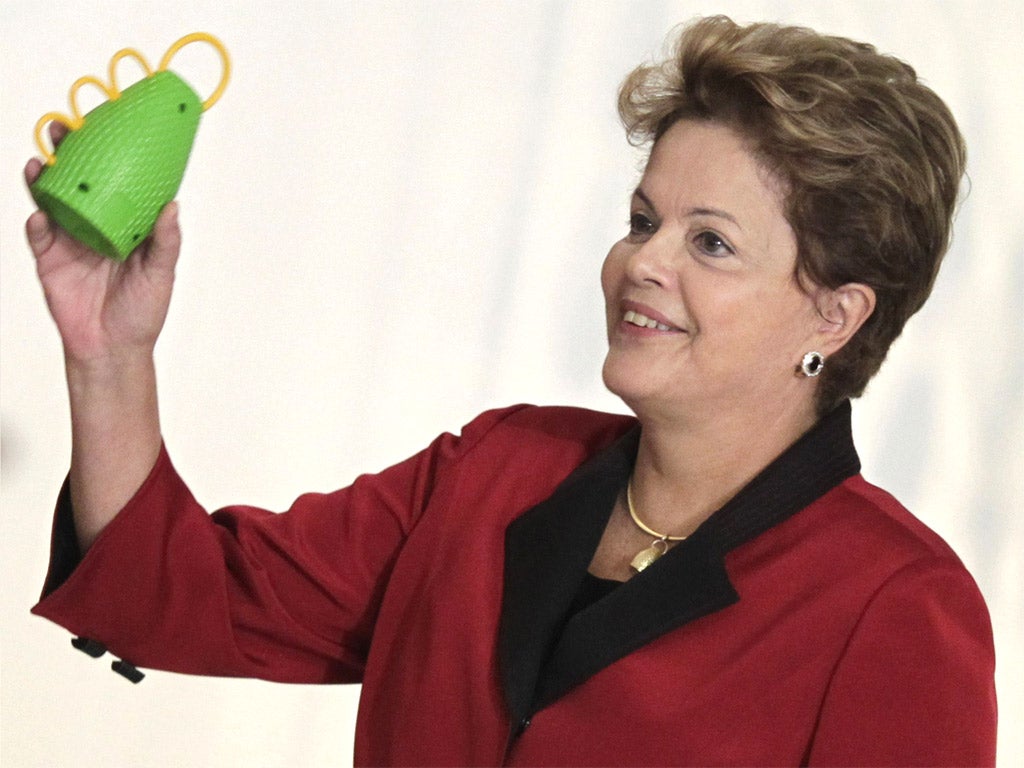2014 World Cup hosts unveil caxirolas - a new infuriating instrument to rival the vuvuzela
If you thought vuvuzelas were bad, wait until you hear 80,000 Brazilians shaking their caxirolas

Your support helps us to tell the story
From reproductive rights to climate change to Big Tech, The Independent is on the ground when the story is developing. Whether it's investigating the financials of Elon Musk's pro-Trump PAC or producing our latest documentary, 'The A Word', which shines a light on the American women fighting for reproductive rights, we know how important it is to parse out the facts from the messaging.
At such a critical moment in US history, we need reporters on the ground. Your donation allows us to keep sending journalists to speak to both sides of the story.
The Independent is trusted by Americans across the entire political spectrum. And unlike many other quality news outlets, we choose not to lock Americans out of our reporting and analysis with paywalls. We believe quality journalism should be available to everyone, paid for by those who can afford it.
Your support makes all the difference.Thought you’d heard the last of monotonous drones blasting out from the terraces? Think again.
Following the international sensation of questionable musical value that was the vuvuzela – the multi-coloured two-foot long plastic horn that became such a hit with football fans at the 2010 World Cup in South Africa that they were subsequently banned – the caxirola has been unveiled as the aural stimulant of choice at next year’s tournament in Brazil.
This time the instrument, which has been created in a collaboration between the Brazilian musician Carlinhos Brown and the country’s ministry of sports, has been carefully designed to sound considerably less grating.
Unlike the vuvuzela, which has historical cultural significance in South Africa, the caxirola has been designed especially for use in stadiums.
A yellow and green percussion instrument which makes a rattling sound when shaken, it makes a sound not dissimilar to the traditional South American “rainstick”.
Made from recycled plastic, the noisy implement will be handed to fans attending the Confederations Cup in June, the country’s unofficial dress rehearsal for the 2014 World Cup. The President of Brazil, Dilma Rousseff, said: “It is an object that has the ability to do two things: to combine the image with sound and take us to our goals.”
A FIFA spokesman promised the instrument would “add to the fan experience” at the tournaments and help “create a unique Brazilian atmosphere in the stadiums”.
News of the vuvuzela replacment may come as a relief to armchair football fans around the world following complaints that the South African instruments drowned out television commentary during some games in the 2010 tournament.
Measurements put the sound of the vuvuzela at 127 decibels, just short of the sound level generated by a jet taking off from an aircraft carrier at a distance of 50ft.
Portugal and Real Madrid star Cristiano Ronaldo said the noise from the instruments had affected the concentration of his teammates while the captain of the French side, Patrice Evra, blamed a goalless draw with Uruguay on a vuvuzela cacophony.
Despite calls for an immediate ban on the instruments during the tournament, the South African authorities steadfastly refused the demands insisting that it was “ingrained in our history”. A World Cup spokesman said at the time: “Only a minority are against vuvuzelas. You either love them or hate them. We in South Africa love them.”
The instruments were subsequently banned by UEFA and Fifa, but nonetheless won some fans among those participating in the 2010 games. The England defender Jamie Carragher said the sound had not bothered him while playing and he had already bought two of the instruments for his young children.
Join our commenting forum
Join thought-provoking conversations, follow other Independent readers and see their replies
Comments